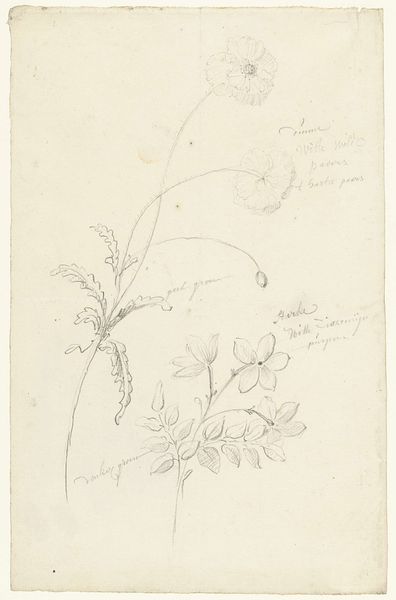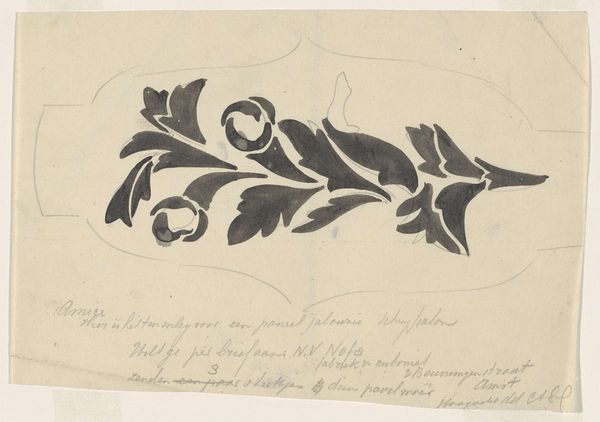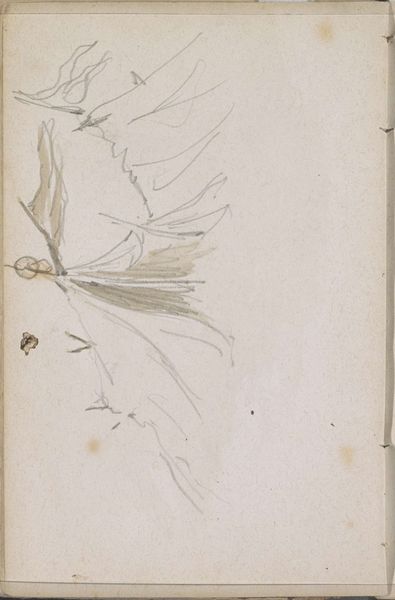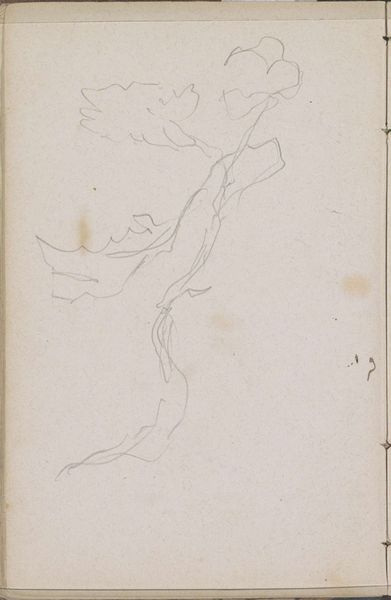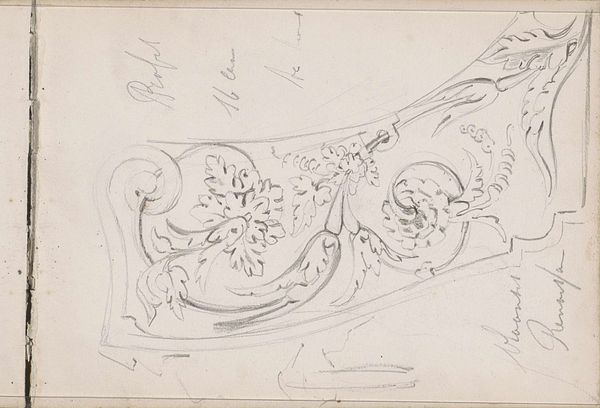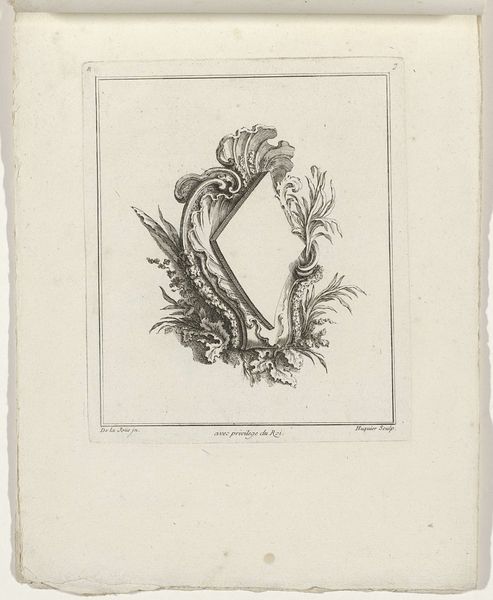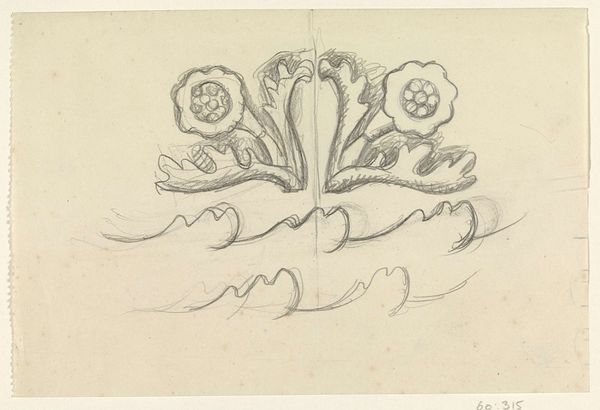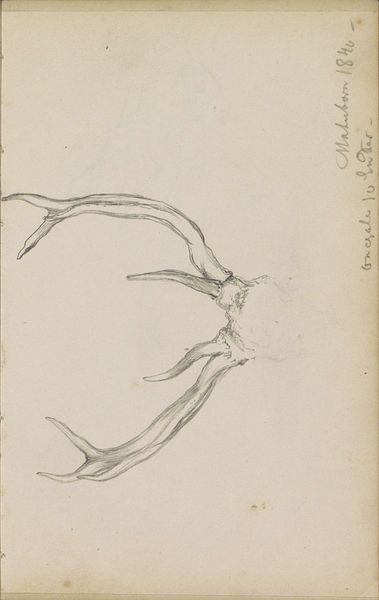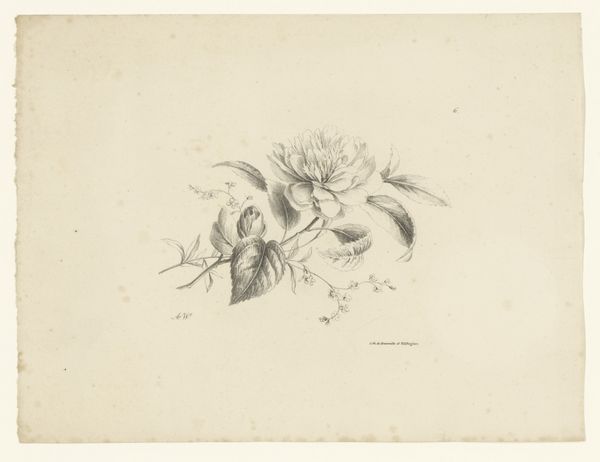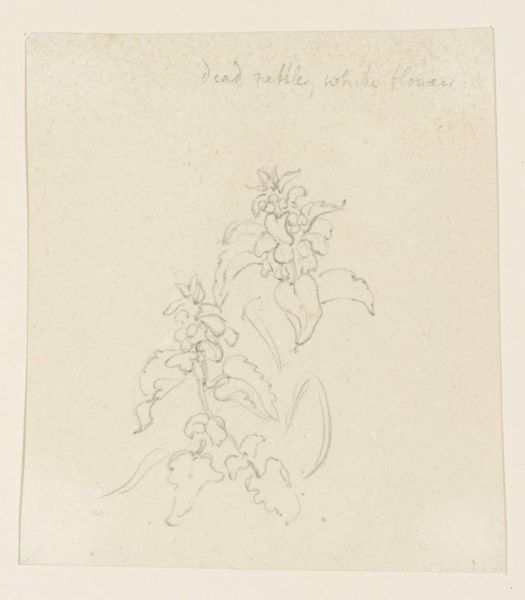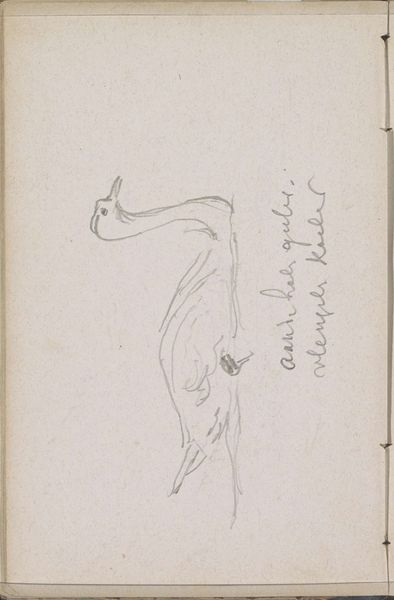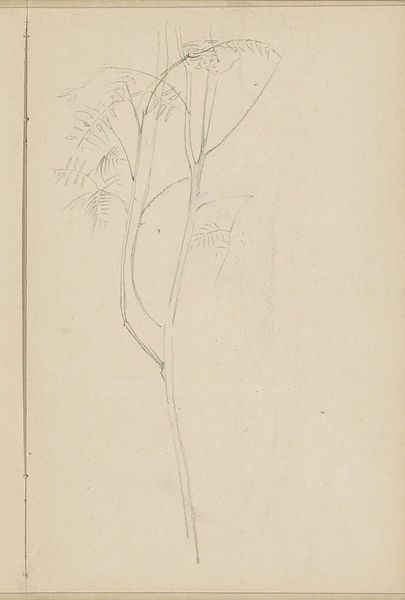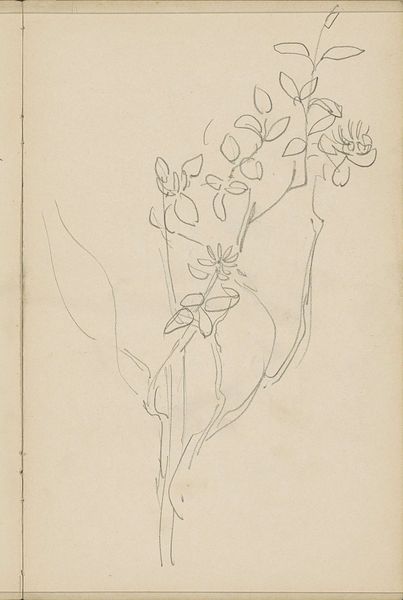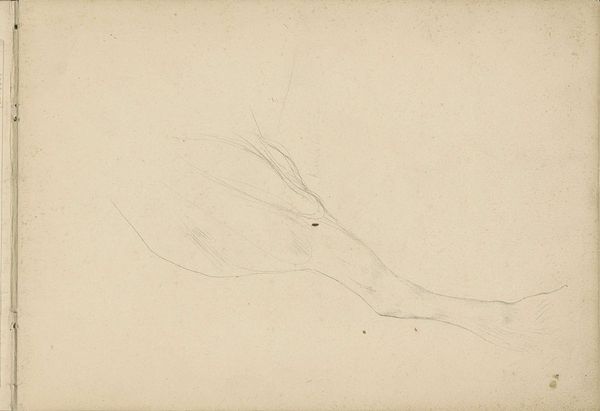
drawing, ornament, paper, pencil
#
drawing
#
amateur sketch
#
ornament
#
toned paper
#
light pencil work
#
pencil sketch
#
incomplete sketchy
#
paper
#
form
#
personal sketchbook
#
ink drawing experimentation
#
pencil
#
line
#
sketchbook drawing
#
pencil work
#
academic-art
#
sketchbook art
Copyright: Rijks Museum: Open Domain
Editor: This is "Bladornament," a pencil drawing on paper by Jac van Looij, made sometime between 1877 and 1880. It looks like a sketch from a personal sketchbook, and its simplicity is quite appealing. What strikes you most about it? Curator: The first thing I notice is how this seemingly simple leaf study speaks to the rigorous academic training artists underwent. These exercises were about mastering form, line, and ultimately, power structures within artistic institutions. How do you think academic art, and exercises like this, shaped artistic production at the time? Editor: It makes me wonder how much freedom artists truly had if they were so entrenched in these traditional methods. Do you think this kind of study stifled creativity, or did it provide a necessary foundation? Curator: It's a complex question. On one hand, adherence to academic standards certainly could limit experimentation. But on the other, the mastery of these skills provided artists with a common visual language. This language could then be subverted or built upon, think of how Impressionism reacted against Academic painting in the second half of the 19th century. Can you see any traces of academic or "realist" approach that were abandoned soon after that, say, into Art Nouveau and the avant-garde movement of the late 19th Century? Editor: I guess seeing the way it meticulously captures light and shadow shows some dedication to realism even in a quick sketch. Curator: Precisely. And the sketch shows that it's about observation. Even within these constraints, artists like Van Looij were finding their own voices, experimenting within established boundaries, paving the way for future stylistic freedom in representing similar images. Editor: That’s a helpful way to see it; that artists were able to slowly dismantle some traditions that didn't fit into their approach by finding new and innovative paths forward. Thanks!
Comments
No comments
Be the first to comment and join the conversation on the ultimate creative platform.
